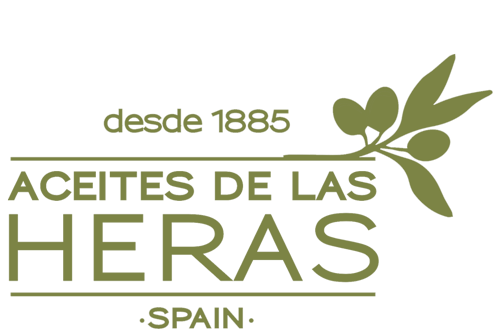News
Olive Oil Prices: A Market-Defying Challenge
Olive oil is an essential ingredient in the Mediterranean gastronomy. This liquid gold has experienced a rollercoaster of prices recently. With the production concentrated in Mediterranean countries, Spain leads the path with its olive-growing tradition and advanced technology. However, factors such as climate change, growing international demand and geopolitical conflicts have driven prices to stratospheric levels.
To cope with this price rise, there are alternatives on the market. In addition to extra virgin olive oil, which is suffering the most from the price rise, there are more affordable alternatives such as olive pomace oil.
The Olive Oil Market Overview
Olive oil is a fundamental component of the gastronomy and food industry. To understand the market, it is important to note that olive oil production is concentrated in the Mediterranean countries, in particular Spain, Italy, Greece, Turkey, and Tunisia, as can be seen in the following map and graph.

Source: IOC (internationaloliveoil.org)

Source: IOC (internationaloliveoil.org)
Spain leads the global ranking in terms of surface area, production, and foreign trade, thanks to its olive-growing tradition and technologically advanced and professional industry.
Spanish olive oil production accounts for 70% of EU production and 45% of world production. It also has a major territorial and social impact, as the sector employs more than 350,000 farmers and generates around 32 million daily wages per season.
Regarding surface area, Spain has 2.75 million hectares of olive groves. Olive growing is the main activity in many municipalities. In addition, Spain is also the leading exporter of olive oil, being the third most exported agri-food product.

Source: Ministerio de Agricultura, Pesca y Alimentación
Olive Oil Price Framework
The olive oil market is characterised by different factors that affect the price and produce fluctuations and a certain instability. These factors include, on one hand, the quantity of oil available to supply the market, and on the other hand, future harvest expectations and demand.
Regarding the supply, variations in harvests are mainly due to climatic conditions as rainfall from October to December of the previous year, average maximum temperatures from January to March and, above all, the days with maximum pollen levels in the air. This affects both flowering and olive yield.
How did prices fluctuate over the past 5 years?
In Spain, prices have fluctuated due to the factors mentioned above. In 2017/2018’s campaign it was expected a harvest like the previous year, but in the end, the production was much higher than the demand, which caused a fall in prices to 2.6€/kg.
The 2018/2019 and 2019/2020 crops reached new records of production, while the demand kept stable. This led to a further drop of the olive oil prices to 2€/kg.
However, due to global harvest expectations for 2020/2021 and a slight increase in consumption, the price started to rise progressively to €3.4/kg.
In addition, in 2021, the COVID-19 pandemic unleashed a growing public concern for health, which led to a recognition of the benefits of incorporating olive oil into the daily diet. As a result, consumption of olive oil has experienced a significant increase as people seek to strengthen their immune system and take care of their health in a more conscious and proactive way, consuming products with a nutritional profile rich in essential components such as oleic acid and polyphenols, as well as natural antioxidants and their health-promoting properties.
In 2022 the price continued to grow up to 5.3 €/kg due to a harvest decrease because of the drought in Spain and excessive heat during olive blossoming. At the same time, demand for olive oil continued to increase with the health care trend.
5 reasons why olive oil has reached stratospheric prices

Source: European Commission, Agriculture and Rural Development
Throughout the 2022-23 season, price fluctuations have been very notable, and their causes can be summarized as follows:
- Poor Harvest 2022: In Spain, 2022 was a complicated year for olive oil. At blossoming period, it was very hot, which resulted in a large harvest loss. In turn, heat promotes the development of fungal infections, resulting in crop losses and reduced fruit yields. This can be compensated by heavy and constant rains for several days, but 2022 was a dry year as well. In conclusion, the previous harvest was very low, and about 40% lower than that recorded in 2021.
- Climate change: limate change affects olive oil production through climate variability, extreme phenomena, water stress and droughts, reducing olive oil productivity and quality. This problem will cause the harvest volume to decrease more and more each year, and the data registered in the past will not be recovered. To face these challenges, it is important to implement sustainable agricultural practices and find measures to mitigate climate change.
- Increase in the International Demand for Olive Oil: The growing awareness of the health benefits associated with olive oil consumption has led more people to adopt healthier diets. In addition, the expansion of Mediterranean gastronomy around the world has contributed to its popularity, and consequently to the increase in demand globally.
Meanwhile, the industry has made efforts to promote and educate about nutritional benefits and healthy uses. In this way it has succeeded in promoting the consumption of olive oil. - War in Ukraine: The Russia-Ukraine conflict has compromised oil availability, prices and raw materials needed for the finished product. On one hand, refined olive oils, including refined olive oil and olive pomace oil, are substitutes of sunflower oil demanded by the food service channel, which led to an increase in the demand for these olive oils types. On the other hand, the glass bottle industry with production located in Ukraine caused a mismatch of stocks and cost increases due to the redistribution of production in factories outside Ukraine and the dominance of multinationals holding most of the market share.
- Rise in Energy Costs: Energy prices have reached historic peaks. The rise in energy prices was initially led by COVID-19 and international demand.This situation was significantly aggravated by the conflict in Ukraine and Russia’s decision against exporting gas to some EU member states.Lastly, heat waves in the summer of 2022 have resulted in a supply-demand imbalance. Demand for energy for cooling is growing, while supply is falling due to the drought. The European Union imports most of its energy, so the effects have been most noticeable. Energy costs for farmers have become more expensive, as well as diesel, fertilizers and plastics.
Impact of the Price Increase
The market situation is clear, prices keep rising and olive growers are now threatening with oil shortages by the end of the season before the new harvest, and the impossibility of meeting all the market demand, even with the new harvest.
Given this uncertainty about the market, the reaction of the oil producing companies is to withhold oil as a preventive measure. Even at exorbitant prices, retailers and distributors are afraid and want to ensure the availability of olive oil to satisfy their customers.
This reaction in the sector generates an even greater increase in demand and, consequently, abrupt increases in prices and greater volatility in the market.
Alternatives in the Market to Cope with Olive Oil Price Increase
The prices of extra virgin olive oil are very high and that is why consumers are looking for alternatives and solutions with the best quality-price ratio. Therefore, compared to the exorbitant prices of extra virgin olive oil, there are other more affordable categories of olive oil to complete the shopping basket in a healthy way.
What types of olive oil are there?
-
-
Extra Virgin Olive Oil
It is the juice obtained from the olive by a mechanical process that does not alter the quality of the fruit. It consists of crushing the olives to obtain a mass. This mass is then centrifuged to separate the olive juice from the stone and pulp, called by-product.
- Natural product.
- It comes from 100% Spanish olives.
- Acidity lower than 0, 8º, the lower the acidity the higher the quality.
- Key element for the Mediterranean diet.
-
Pure Olive Oil or Extra Light
It is the result of blending EVOO with refined olive oil.
- Extra virgin olive oil adds flavour to the oil.
- It is slightly cheaper but the price difference with EVOO is not that significant.
- It is healthy as it comes from the olive, and it is mixed with EVOO, so it is rich in oleic acid.
- More neutral tasting or light tasting.
-
Pomace Olive Oil
-
It is the result of mixing extra virgin olive oil with refined olive pomace oil.
-
- It is cheaper than extra virgin or pure olive oils.
- Healthier than other vegetable oils, as it comes from the olive so is rich in oleic acid, it also contains antioxidants and monounsaturated fats of great nutritional interest.
- It does not modify the flavour of other ingredients.
- Good yield for frying.
- It makes olive oil production sustainable by valorizing 100% of the by-products coming from the olive grove.
- It is the best alternative, since the price reduction is considerable, and the oil is nutritious since it comes from the olive and contains a small proportion of EVOO.





